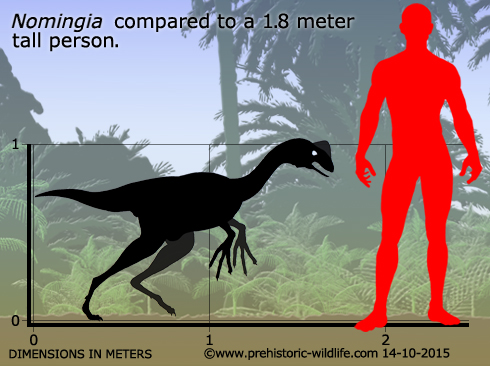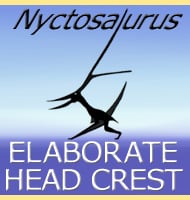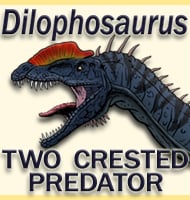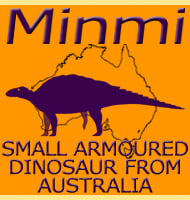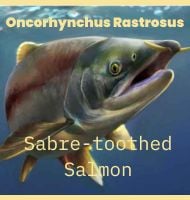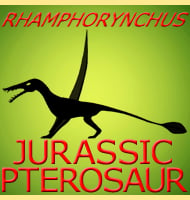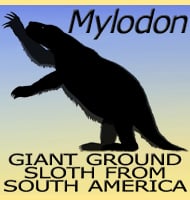In Depth
The end five caudal (tail) vertebrae of Nomingia are fused together to form a pygostyle like that of birds. In birds, the pygostyle serves as the attachment point for the tail flight feathers, and in Nomingia the pygostyle probably had a similar function. However as an oviraptosaur, Nomingia would not have been capable of flying, so the feather fan that attached to the pygostyle of Nomingia most probably served as a display device for signalling to other members of the species. A possible scenario could be a Nomingia bowing forward towards another and then raising its tail pygostyle high, the largest and best developed belonging to the healthiest individual.
Other genera known to have had similar display devices to Nomingia include Caudipteryx and Similicaudipteryx, though others such as Epidexipteryx are also known to have had elaborate tail displays. Hailing from the Nemegt Formation, Nomingia, may have come into contact with other oviraptosaur genera such as Rinchenia and Avimimus. Other dinosaurs that Nomingia may have lived alongside include ornithomimosaurs such as Gallimimus, therizinosaurs such as Therizinosaurus, hadrosaurs like Saurolophus, ankylosaurs like Tarchia and sauropods like Nemegtosaurus. predatory threats could have included dromaeosaurs like Adasaurus and troodonts like Zanabazar, but it were the tyrannosaurs such as Alioramus and Tarbosaurus that would have been the apex predators of the Nemegt Formation.
Further Reading
- A new oviraptorosaur (Dinosauria, Theropoda) from Mongolia: the first dinosaur with a pygostyle - R. Barsbold, H. Osm�lska, M. Watabe, P. J. Currie & K. Tsogtbaatar - 2000.
